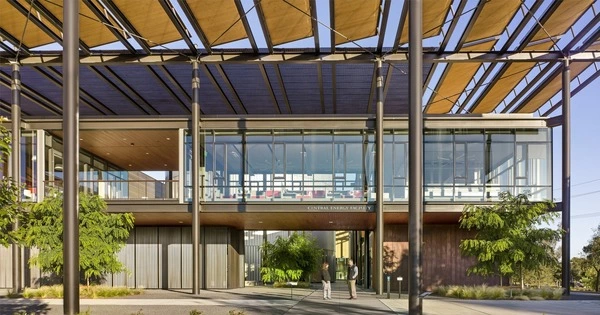Solar architecture is an architectural approach that uses the Sun to generate clean, renewable solar power. The design and construction of buildings and structures that incorporate solar energy technologies to harness, utilize, and optimize the power of the sun for various purposes is referred to as solar architecture. It is related to optics, thermodynamics, electronics, and materials science. Solar architecture requires both active and passive solar housing skills.
The goal of solar architecture is to design long-lasting, energy-efficient structures that reduce reliance on nonrenewable energy sources and reduce the environmental impact of human activity. The use of flexible thin-film photovoltaic modules allows for seamless integration with steel roofing profiles, enhancing the design of the building. Solar architecture also includes orienting a building to the Sun, selecting materials with favorable thermal mass or light-dispersing properties, and designing spaces that naturally circulate air.
The rigidity and weight of standard solar power panels hampered the early development of solar architecture. The ongoing development of photovoltaic (PV) thin film solar has resulted in a lightweight yet robust vehicle for harnessing solar energy to reduce a building’s environmental impact.
Here are some key aspects of solar architecture:
- Passive Solar Design: Passive solar design entails orienting buildings so that natural sunlight is used as much as possible for heating and lighting. This includes strategically placing windows, storing and releasing heat with thermal mass, and shading to prevent excessive solar gain during hot seasons.
- Active Solar Systems: Active solar systems capture and convert solar energy into electricity or heat using technologies such as solar photovoltaic (PV) panels and solar thermal collectors. Solar PV panels directly convert sunlight into electricity, whereas solar thermal collectors heat a fluid that can be used for space heating, hot water, or even electricity generation via steam turbines.
- Solar-Ready Construction: Solar architecture entails designing buildings with features that will make future integration of solar technologies easier. Ensure proper roof orientation, adequate structural support for PV panels, and electrical system considerations for easy connection to solar arrays.
- Solar Shading and Glazing: Solar shading and glazing are critical for preventing overheating in the summer and improving insulation in the winter. Energy performance can be improved by using energy-efficient windows and shading devices such as overhangs, awnings, or louvers.
- Net-Zero Energy Buildings: Solar architecture is often a key component in achieving net-zero energy buildings, where the total energy consumed by a structure is equal to or less than the renewable energy it produces on-site.
Overall, solar architecture plays a vital role in promoting sustainable development, reducing greenhouse gas emissions, and moving toward a more environmentally friendly future. As solar technology advances, architects and designers continue to explore innovative ways to harness the power of the sun in building design and construction.
















